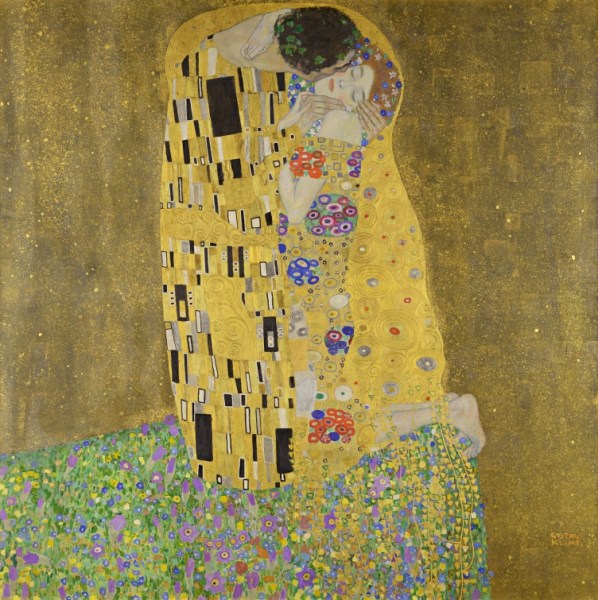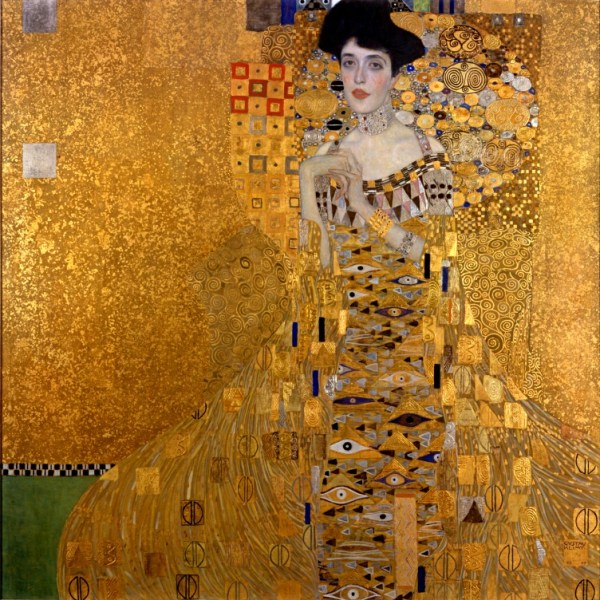Coming under the hammer for a whopping £85.3 million ($108.4 million or 885 crores) at a Sotheby’s sale in London on Tuesday evening (June 27), the last portrait completed by Austrian artist Gustav Klimt has become the most expensive artwork ever to sell at a European auction.
Found on an easel in his Vienna studio when he died in 1918, the work titled Dame mit Fächer (Lady with a Fan) depicts an unidentified woman in a kimono and is painted in the artist’s well-recognised rich expressive style, which also borrowed from Chinese motifs and has patterns influenced by Japanese woodblock. The bidding reportedly lasted 10 minutes, and the work was finally sold to a Hong Kong-based collector.

Previously, Alberto Giacometti’s 1961 bronze sculpture L’Homme Qui Marche I, which fetched £65 million in 2010, was the most expensive work sold at an auction in Europe. The sale of Klimt’s work on June 27 also sets a new record for the artist – whose previous auction record was $104.6 million for Birch Forest, which sold last year in New York. We look at the life and art of the Austrian symbolist.
His legacy and the famed Golden Period
Considered one of the greatest decorative painters of the 20th century, Klimt’s oil on canvas (1907-08) painting The Kiss, with two lovers in an embrace, is arguably among the most recognised works of art. He was a pioneer of the Art Nouveau movement – an ornamental and decorative style that flourished in the West in the late 1800s – and the co-founder and first president of the Vienna Secession that was established in 1897, to urge artists to break away from classical styles and rules.
 ‘The Kiss’ by Gustav Klimt. (Via Wikimedia Commons)
‘The Kiss’ by Gustav Klimt. (Via Wikimedia Commons)
Though he produced academic paintings, life drawings and decorative art objects, some of his most well-known works perhaps belong to the Golden Phase, which lasted from the late 1890s to 1909 and was influenced by his trip to Ravenna, Italy, where he was mesmerised by the shimmering details of Byzantine art. Back in Vienna, the artist began to make bold use of gold with ornamental detailing in works such as Pallas Athene (1898), depicting the Greek goddess Athena.
Some of the famous works from this period include The Kiss, Portrait of Adele Bloch-Bauer I and Judith and the Head of Holofernes, all of which generously use gold leaf.
 ‘Adele Bloch-Bauer I’ uses gold leaf. (Via Wikimedia Commons)
‘Adele Bloch-Bauer I’ uses gold leaf. (Via Wikimedia Commons)
While he mentored artists such as Egon Schiele and Oskar Kokoschka, his experiments have influenced generations of artists in varied ways. His pioneering murals that also pleaded for the coming together of art and architecture have influenced the Bauhaus and the Russian Constructivists.
Who was Gustav Klimt?
Though in the public eye with the recognition he received during his lifetime, Klimt did not like discussing his personal life or work. He reportedly once stated: “I am convinced that I am not particularly interesting as a person. There is nothing special about me. I am a painter who paints day after day from morning until night.”
Born in 1862 in Vienna, his mother Anna dreamt of becoming a musical performer, and his father Ernst was a gold engraver. Second born with six siblings, his family experienced financial hardships but his father recognised the artistic talents of Klimt and his two brothers, Ernst and Georg.
At the young age of 14, Klimt got admission into the prestigious Viennese School of Arts and Crafts, where he studied a range of subjects, including fresco painting and mosaic, and spent hours in Vienna’s museums, studying works of masters. To supplement their finances, Ernst and Klimt also painted portraits from photographs and made technical drawings for an ear specialist.
Explained Culture | Did Barbie cause a paucity of pink, and controversies she caused in the past
His numerous inspirations
Receiving decorative commissions early in his career, including murals and ceiling paintings for theatres and public buildings across Austria, Klimt attracted considerable attention for his frescoes at Vienna’s Burgtheater. These won him the Golden Order of Merit from Emperor Franz Josef in 1888.
Inspired by the painter Hans Makart, he often experimented with human forms, and his 20s saw him tilt towards Viennese avant-garde, rejecting traditional approaches that supported classicism, rationality and naturalism. The death of his father and brother Ernst in 1892 was a turning point in his life and art, and by 1897 he had broken away from the more conservative Vienna Artists’ Association to establish the more radical Secession group. He also began to increasingly explore sexuality and his interest in the female form dominated his oeuvre. He reportedly once stated, “I am less interested in myself as a subject for painting than I am in other people, above all, women.”
Most Read 1Chandrayaan-3 mission: Dawn breaks on Moon, all eyes on lander, rover to wake up 2As Indo-Canadian relations sour, anxiety grips Indian students, residents who wish to settle in Canada 3Karan Johar says Sanjay Leela Bhansali did not call him after Rocky Aur Rani: ‘He’s never called me but…’ 4Gadar 2 box office collection day 40: Hit by Shah Rukh Khan’s Jawan onslaught, Sunny Deol movie ends BO run with Rs 45 lakh earning 5Shubh’s tour in India cancelled: Why is the Canada-based singer facing the music?
The later years also saw him make references to the cycle of life (depicted directly in the celebrated Tree of Life in 1905), and draw from Japanese art, referred to as Japonism, in works that included Lady with a Fan.
Controversial life
The artist courted numerous controversies in personal and professional life. Some believe he had sexual relations with several of his women models, and that the unmarried artist arguably fathered 14 children with his numerous lovers. He also faced charges of obscenity due to his erotic portrayals, which were also described as misogynistic by some.
Also ReadCurtains for old Parliament building: The Madhya Pradesh temple believed …Expert Weighs in | ‘Tagore’s vision for Santiniketan difficult to restore…Heard the ‘Makeba’ song viral on Instagram reels? Here’s the story of the…The science and history behind curly hair, and their changing perceptions…
Presenting women as sensuous “femme fatales,” his University of Vienna ceiling paintings in the early 1900s were denounced as obscene due to the manner in which they depicted female nudes. Following the controversy, Klimt decided not to accept more public commissions.


